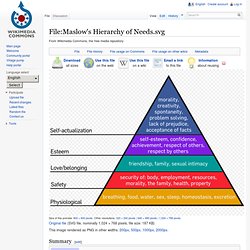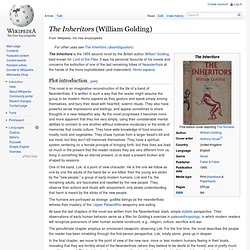

Who Rules America? Who Rules America?

Is a book by psychologist and sociologist G. William Domhoff, first published in 1967 and updated in 2009, that argues against the concentration of power and wealth in the American upper class.[1] The 2010 edition brings the discussion up to date and also includes the rise of Barack Obama, his campaign finance supporters, and the nature of his administration. Domhoff argues in the book that a power elite wields power in America through its support of think-tanks, foundations, commissions, and academic departments.[2] Additionally, he argues that the elite control institutions through overt authority, not covert influence.[3] In his introduction, Domhoff writes that the book was inspired by the work of four men: sociologists E. Digby Baltzell, C. The Fountainhead.
The Fountainhead is a 1943 novel by Ayn Rand, and her first major literary success.

More than 6.5 million copies of the book have been sold worldwide. The Fountainhead's protagonist, Howard Roark, is an individualistic young architect who chooses to struggle in obscurity rather than compromise his artistic and personal vision. The book follows his battle to practice what the public sees as modern architecture, which he believes to be superior, despite an establishment centered on tradition-worship. On the Origin of Species. Various evolutionary ideas had already been proposed to explain new findings in biology.

There was growing support for such ideas among dissident anatomists and the general public, but during the first half of the 19th century the English scientific establishment was closely tied to the Church of England, while science was part of natural theology. Ideas about the transmutation of species were controversial as they conflicted with the beliefs that species were unchanging parts of a designed hierarchy and that humans were unique, unrelated to other animals.
The political and theological implications were intensely debated, but transmutation was not accepted by the scientific mainstream. Summary of Darwin's theory[edit] Darwin pictured shortly before publication Darwin's theory of evolution is based on key facts and the inferences drawn from them, which biologist Ernst Mayr summarised as follows:[3] Background[edit] Developments before Darwin's theory[edit] Thus Spoke Zarathustra. Thus Spoke Zarathustra: A Book for All and None (German: Also sprach Zarathustra: Ein Buch für Alle und Keinen, also translated as Thus Spake Zarathustra) is a philosophical novel by German philosopher Friedrich Nietzsche, composed in four parts between 1883 and 1885. Much of the work deals with ideas such as the "eternal recurrence of the same", the parable on the "death of God", and the "prophecy" of the Übermensch, which were first introduced in The Gay Science.[1] Origins[edit] Thus Spoke Zarathustra was conceived while Nietzsche was writing The Gay Science; he made a small note, reading "6,000 feet beyond man and time," as evidence of this.[2] More specifically, this note related to the concept of the eternal recurrence, which is, by Nietzsche's admission, the central idea of Zarathustra; this idea occurred to him by a "pyramidal block of stone" on the shores of Lake Silvaplana in the Upper Engadine, a high alpine region whose valley floor is at 6,000 ft.
Synopsis[edit] Themes[edit] Maslow's Hierarchy of Needs.svg - Wikipedia, the free encyclopedia. Cancel Edit Delete Preview revert Text of the note (may include Wiki markup) Could not save your note (edit conflict or other problem).

Please copy the text in the edit box below and insert it manually by editing this page. Upon submitting the note will be published multi-licensed under the terms of the CC-BY-SA-3.0 license and of the GFDL, versions 1.2, 1.3, or any later version. See our terms of use for more details. Add a note Draw a rectangle onto the image above (press the left mouse button, then drag and release). Save To modify annotations, your browser needs to have the XMLHttpRequest object. [[MediaWiki talk:Gadget-ImageAnnotator.js|Adding image note]]$1 [[MediaWiki talk:Gadget-ImageAnnotator.js|Changing image note]]$1 [[MediaWiki talk:Gadget-ImageAnnotator.js|Removing image note]]$1. The Inheritors (William Golding) The Inheritors is the 1955 second novel by the British author William Golding, best known for Lord of the Flies.

It was his personal favourite of his novels and concerns the extinction of one of the last remaining tribes of Neanderthals at the hands of the more sophisticated (and malevolent) Homo sapiens. This novel is an imaginative reconstruction of the life of a band of Neanderthals. It is written in such a way that the reader might assume the group to be modern Homo sapiens as they gesture and speak simply among themselves, and bury their dead with heartfelt, solemn rituals.
They also have powerful sense impressions and feelings, and appear sometimes to share thoughts in a near-telepathic way. As the novel progresses it becomes more and more apparent that they live very simply, using their considerable mental abilities to connect to one another without extensive vocabulary or the kinds of memories that create culture.